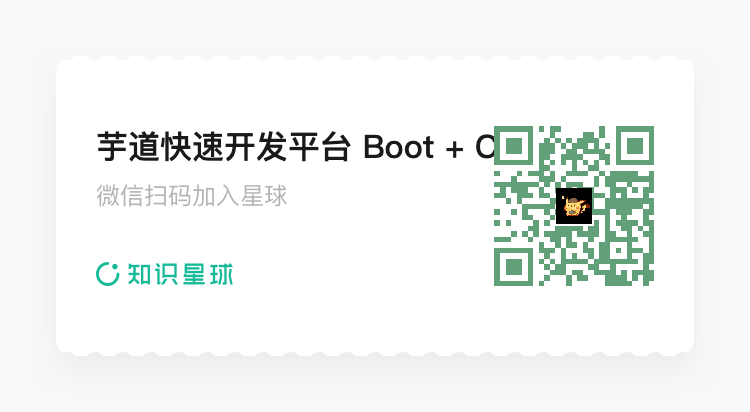👉 这是一个或许对你有用的社群
🐱 一对一交流/面试小册/简历优化/求职解惑,欢迎加入「芋道快速开发平台」知识星球。下面是星球提供的部分资料:
《项目实战(视频)》:从书中学,往事上“练”
《互联网高频面试题》:面朝简历学习,春暖花开
《架构 x 系统设计》:摧枯拉朽,掌控面试高频场景题
《精进 Java 学习指南》:系统学习,互联网主流技术栈
《必读 Java 源码专栏》:知其然,知其所以然

👉这是一个或许对你有用的开源项目
国产 Star 破 10w+ 的开源项目,前端包括管理后台 + 微信小程序,后端支持单体和微服务架构。
功能涵盖 RBAC 权限、SaaS 多租户、数据权限、商城、支付、工作流、大屏报表、微信公众号、CRM 等等功能:
Boot 仓库:https://gitee.com/zhijiantianya/ruoyi-vue-pro
Cloud 仓库:https://gitee.com/zhijiantianya/yudao-cloud
视频教程:https://doc.iocoder.cn
【国内首批】支持 JDK 21 + SpringBoot 3.2.2、JDK 8 + Spring Boot 2.7.18 双版本
来源:juejin.cn/post/
7283803914645569536
我们都知道Spring在创建一个bean的时候,还要去填充bean的属性
大致流程如下:
反射创建bean——
createBeanInstance填充bean——
populateBean初始化bean——
initializeBean(包括前后置增强)注册bean的销毁方法——
registerDisposableBeanIfNecessary
这个填充bean的逻辑是在populateBean中
protected void populateBean(String beanName, RootBeanDefinition mbd, @Nullable BeanWrapper bw) {
// ...
PropertyDescriptor[] filteredPds = null;
if (hasInstAwareBpps) {
if (pvs == null) {
pvs = mbd.getPropertyValues();
}
for (InstantiationAwareBeanPostProcessor bp : getBeanPostProcessorCache().instantiationAware) {
// here
PropertyValues pvsToUse = bp.postProcessProperties(pvs, bw.getWrappedInstance(), beanName);
if (pvsToUse == null) {
if (filteredPds == null) {
filteredPds = filterPropertyDescriptorsForDependencyCheck(bw, mbd.allowCaching);
}
pvsToUse = bp.postProcessPropertyValues(pvs, filteredPds, bw.getWrappedInstance(), beanName);
if (pvsToUse == null) {
return;
}
}
pvs = pvsToUse;
}
}
// ...
if (pvs != null) {
applyPropertyValues(beanName, mbd, bw, pvs);
}
}而除了applyPropertyValues可以填充bean的属性外
更多的填充逻辑(字段注入)应该是在InstantiationAwareBeanPostProcessor中的postProcessProperties里面,字段注入就是常用的@Autowired、@Resource注解
InstantiationAwareBeanPostProcessor是一个接口
它的子类中实现Autowired注入的是AutowiredAnnotationBeanPostProcessor,实现Resource注入的是CommonAnnotationBeanPostProcessor
接下来分析一下AutowiredAnnotationBeanPostProcessor是怎么进行字段注入的
// AutowiredAnnotationBeanPostProcessor.postProcessProperties
@Override
public PropertyValues postProcessProperties(PropertyValues pvs, Object bean, String beanName) {
// 找到需要Autowired的元数据(字段、方法)
InjectionMetadata metadata = findAutowiringMetadata(beanName, bean.getClass(), pvs);
try {
// 注入
metadata.inject(bean, beanName, pvs);
}
catch (BeanCreationException ex) {
throw ex;
}
catch (Throwable ex) {
throw new BeanCreationException(beanName, "Injection of autowired dependencies failed", ex);
}
return pvs;
}以上这段代码是AutowiredAnnotationBeanPostProcessor实现的postProcessProperties
流程就是先找到需要通过findAutowiringMetadata找到需要Autowired的元数据(字段、方法) ,然后再inject
先看看findAutowiringMetadata
// AutowiredAnnotationBeanPostProcessor.findAutowiringMetadata
private InjectionMetadata findAutowiringMetadata(String beanName, Class<?> clazz, @Nullable PropertyValues pvs) {
// Fall back to class name as cache key, for backwards compatibility with custom callers.
String cacheKey = (StringUtils.hasLength(beanName) ? beanName : clazz.getName());
// Quick check on the concurrent map first, with minimal locking.
InjectionMetadata metadata = this.injectionMetadataCache.get(cacheKey);
if (InjectionMetadata.needsRefresh(metadata, clazz)) {
synchronized (this.injectionMetadataCache) {
metadata = this.injectionMetadataCache.get(cacheKey);
if (InjectionMetadata.needsRefresh(metadata, clazz)) {
if (metadata != null) {
metadata.clear(pvs);
}
metadata = buildAutowiringMetadata(clazz);
this.injectionMetadataCache.put(cacheKey, metadata);
}
}
}
return metadata;
}这个needsRefresh简单看看就好,我们是第一次进入这个方法,所以这个metadata是null,那么这个方法返回的是true
public static boolean needsRefresh(@Nullable InjectionMetadata metadata, Class<?> clazz) {
return (metadata == null || metadata.needsRefresh(clazz));
}那么会进入到这个方法buildAutowiringMetadata
private InjectionMetadata buildAutowiringMetadata(final Class<?> clazz) {
if (!AnnotationUtils.isCandidateClass(clazz, this.autowiredAnnotationTypes)) {
return InjectionMetadata.EMPTY;
}
List<InjectionMetadata.InjectedElement> elements = new ArrayList<>();
Class<?> targetClass = clazz;
do {
final List<InjectionMetadata.InjectedElement> currElements = new ArrayList<>();
// 处理字段
ReflectionUtils.doWithLocalFields(targetClass, field -> {
MergedAnnotation<?> ann = findAutowiredAnnotation(field);
if (ann != null) {
if (Modifier.isStatic(field.getModifiers())) {
if (logger.isInfoEnabled()) {
logger.info("Autowired annotation is not supported on static fields: " + field);
}
return;
}
boolean required = determineRequiredStatus(ann);
currElements.add(new AutowiredFieldElement(field, required));
}
});
// 处理方法
ReflectionUtils.doWithLocalMethods(targetClass, method -> {
Method bridgedMethod = BridgeMethodResolver.findBridgedMethod(method);
if (!BridgeMethodResolver.isVisibilityBridgeMethodPair(method, bridgedMethod)) {
return;
}
MergedAnnotation<?> ann = findAutowiredAnnotation(bridgedMethod);
if (ann != null && method.equals(ClassUtils.getMostSpecificMethod(method, clazz))) {
if (Modifier.isStatic(method.getModifiers())) {
if (logger.isInfoEnabled()) {
logger.info("Autowired annotation is not supported on static methods: " + method);
}
return;
}
if (method.getParameterCount() == 0) {
if (logger.isInfoEnabled()) {
logger.info("Autowired annotation should only be used on methods with parameters: " +
method);
}
}
boolean required = determineRequiredStatus(ann);
PropertyDescriptor pd = BeanUtils.findPropertyForMethod(bridgedMethod, clazz);
currElements.add(new AutowiredMethodElement(method, required, pd));
}
});
elements.addAll(0, currElements);
// 获取父类,继续找
targetClass = targetClass.getSuperclass();
}
while (targetClass != null && targetClass != Object.class);
return InjectionMetadata.forElements(elements, clazz);
}这边传入的clazz就是bean的Class,忘记了可以找上面的代码看一下
这里源码写了很多,我们暂时只关心注入字段的那一块
ReflectionUtils.doWithLocalFields(targetClass, field -> {
MergedAnnotation<?> ann = findAutowiredAnnotation(field);
if (ann != null) {
if (Modifier.isStatic(field.getModifiers())) {
if (logger.isInfoEnabled()) {
logger.info("Autowired annotation is not supported on static fields: " + field);
}
return;
}
boolean required = determineRequiredStatus(ann);
currElements.add(new AutowiredFieldElement(field, required));
}
});处理字段的时候进入了ReflectionUtils的doWithLocalFields方法
// ReflectionUtils.doWithLocalFields
public static void doWithLocalFields(Class<?> clazz, FieldCallback fc) {
for (Field field : getDeclaredFields(clazz)) {
try {
fc.doWith(field);
}
catch (IllegalAccessException ex) {
throw new IllegalStateException("Not allowed to access field '" + field.getName() + "': " + ex);
}
}
}继续追溯一下可以得知,这里是获取clazz的所有字段并进行处理,这个FieldCallback是一个函数式接口,它的实现就是外面传进来的这段代码
field -> {
MergedAnnotation<?> ann = findAutowiredAnnotation(field);
if (ann != null) {
if (Modifier.isStatic(field.getModifiers())) {
if (logger.isInfoEnabled()) {
logger.info("Autowired annotation is not supported on static fields: " + field);
}
return;
}
boolean required = determineRequiredStatus(ann);
currElements.add(new AutowiredFieldElement(field, required));
}
}那么在这段代码里面,又去找这个字段有没有被@Autowired修饰
// AutowiredAnnotationBeanPostProcessor.findAutowiredAnnotation
@Nullable
private MergedAnnotation<?> findAutowiredAnnotation(AccessibleObject ao) {
MergedAnnotations annotations = MergedAnnotations.from(ao);
// autowiredAnnotationTypes包含 @Autowired,@Value,@Inject
for (Class<? extends Annotation> type : this.autowiredAnnotationTypes) {
MergedAnnotation<?> annotation = annotations.get(type);
if (annotation.isPresent()) {
return annotation;
}
}
return null;
}如果有@Autowired修饰,那么lambda中的ann不为null
最关键的地方来了,接下来会判断这个字段是不是static的,如果是,那么会发出警告,并且直接返回,不进行注入了
field -> {
MergedAnnotation<?> ann = findAutowiredAnnotation(field);
if (ann != null) {
// 判断是否被static修饰
if (Modifier.isStatic(field.getModifiers())) {
if (logger.isInfoEnabled()) {
logger.info("Autowired annotation is not supported on static fields: " + field);
}
return;
}
boolean required = determineRequiredStatus(ann);
currElements.add(new AutowiredFieldElement(field, required));
}
}最终注入的逻辑在InjectionMetadata的inject中
// InjectionMetadata.inject
public void inject(Object target, @Nullable String beanName, @Nullable PropertyValues pvs) throws Throwable {
Collection<InjectedElement> checkedElements = this.checkedElements;
Collection<InjectedElement> elementsToIterate =
(checkedElements != null ? checkedElements : this.injectedElements);
if (!elementsToIterate.isEmpty()) {
for (InjectedElement element : elementsToIterate) {
element.inject(target, beanName, pvs);
}
}
}element的逻辑就暂时省略了,大概就是如果是字段,那么通过反射去注入,如果是方法,也通过反射去执行
@Resource与以上大致同理
总结
总的来说,就一句话,spring在使用字段注入对静态字段进行注入时,会忽略掉这个字段,不去注入
也就是说Spring是有能力去注入静态字段的,但是Spring没有选择注入,为什么呢?
可能是因为Spring的设计理念是管理bean对象,只有属于对象的字段Spring才去进行管理,如果是static的话,那么这个字段属于类了,这个时候Spring去进行管理貌似不符合它的设计理念,所以Spring直接忽略掉了;另外如果一个bean修改了这个字段,那么所有bean的这个字段都会受到影响,因为这个字段是属于类的,这个时候可能就会问题
那么有没有办法实现静态字段注入呢?
可以的,在方法中打上@Autowired注解,在方法里面去对静态字段进行赋值,当然这个方法也不能是静态的,否则也会被spring会忽略掉
不过如果能够不对静态字段注入就尽量不要注入,因为spring本身就不鼓励我们这么做,这种不鼓励已经深入到代码里面了
欢迎加入我的知识星球,全面提升技术能力。
👉 加入方式,“长按”或“扫描”下方二维码噢:

星球的内容包括:项目实战、面试招聘、源码解析、学习路线。





文章有帮助的话,在看,转发吧。
谢谢支持哟 (*^__^*)




















 1719
1719











 被折叠的 条评论
为什么被折叠?
被折叠的 条评论
为什么被折叠?








